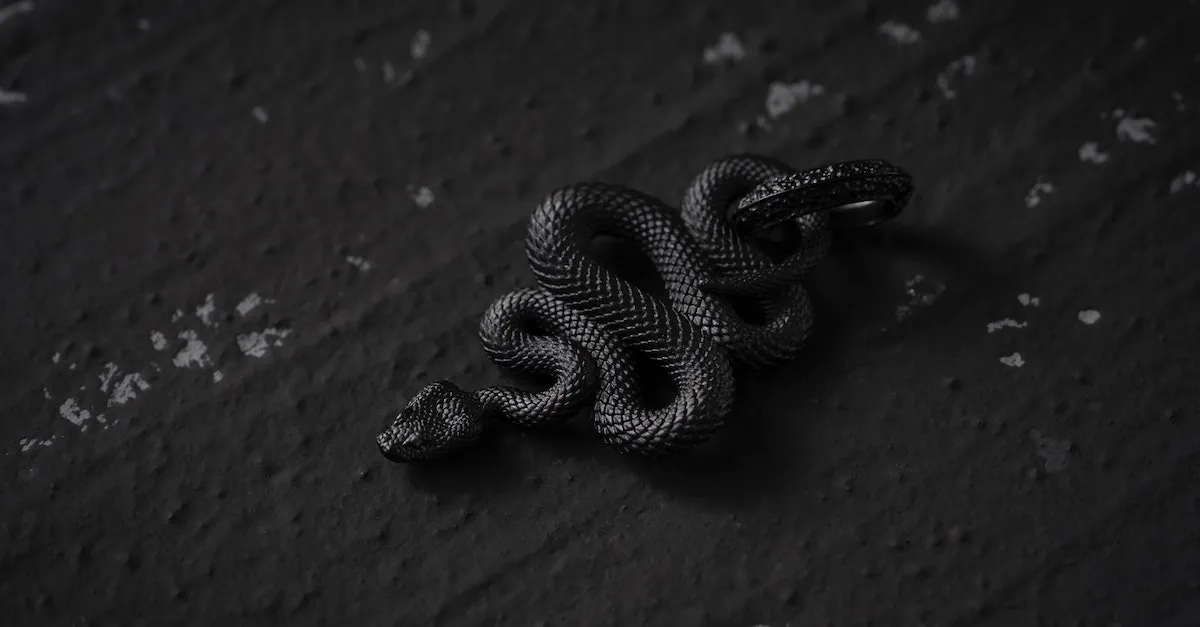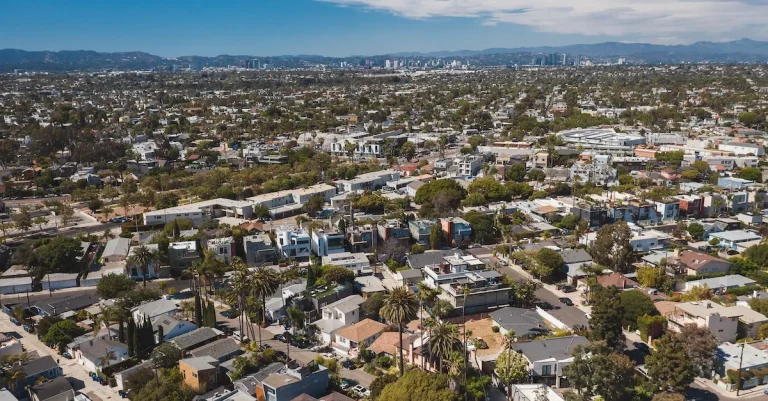Black Mambas In Florida: Examining Claims And Understanding The Venomous African Snakes
With their intimidating name and lethal bite, black mambas stir up plenty of fear and fascination. Rumors of the African snakes appearing in Florida emerge now and then. But how valid are these claims? And how did these snakes get such a ominous reputation? Keep reading to separate black mamba fact from fiction.
If you’re short on time, here’s the quick answer: No wild populations of black mambas exist in Florida. Native to sub-Saharan Africa, black mambas are extremely rare even in captivity in the U.S. When mamba sightings occur in Florida, they likely involve escaped or released captive exotic pets.
Black Mamba Facts and Background
The Black Mamba (Dendroaspis polylepis) is a highly venomous snake native to sub-Saharan Africa. Despite its name, the Black Mamba is not actually black, but rather a grayish-brown color. It is known for its incredible speed and potent venom, making it one of the most feared snakes in the world.
Native Habitat and Range in Africa
The Black Mamba is typically found in a wide range of habitats across Africa, including savannas, rocky areas, and even forests. Its natural range extends from southern and eastern Africa, including countries such as South Africa, Zimbabwe, Mozambique, and Kenya.
However, it is important to note that the Black Mamba is not native to Florida or any other part of the United States.
Characteristics: Size, Appearance, Speed
The Black Mamba is a relatively large snake, with adults reaching lengths of up to 14 feet (4.3 meters). It has a slender body and a distinctive coffin-shaped head. Despite its size, the Black Mamba is incredibly agile and can move at speeds of up to 12 miles per hour (20 kilometers per hour), making it one of the fastest snakes in the world.
Diet and Hunting Behaviors
The diet of the Black Mamba primarily consists of small mammals, such as rodents and birds. It is an ambush predator, relying on its speed and stealth to catch its prey. Once it has successfully captured its meal, the Black Mamba delivers a lethal bite, injecting venom that quickly incapacitates its victim.
Toxin and Lethality of its Venom
The venom of the Black Mamba is highly potent, containing neurotoxins that can cause paralysis and respiratory failure. If left untreated, a bite from a Black Mamba can be deadly. However, it is important to note that due to the availability of antivenom and prompt medical treatment, fatalities from Black Mamba bites are relatively rare.
For more information about the Black Mamba and other venomous snakes, you can visit reputable sources such as the National Geographic or the Snake Removal website.
Prevalence of Black Mambas in Captivity in the United States
The presence of Black Mambas in captivity in the United States is incredibly rare. These venomous African snakes are highly sought after by collectors and enthusiasts due to their reputation as one of the deadliest snakes in the world.
However, the limited availability of Black Mambas in zoos and as exotic pets is a testament to the challenges associated with their captivity.
Rarity of Mambas in Zoos and as Exotic Pets
While zoos strive to provide educational experiences for visitors, housing a Black Mamba comes with its own set of unique challenges. Due to their aggressive nature and highly venomous bite, zoos must ensure the utmost safety for both the staff and the public.
As a result, only a handful of accredited zoos in the United States have successfully maintained Black Mambas in captivity.
Similarly, the private ownership of Black Mambas as exotic pets is extremely uncommon. These snakes require specialized care, including spacious enclosures, proper temperature and humidity control, and a carefully tailored diet.
Additionally, the potential hazards associated with owning a venomous snake often deter even the most experienced reptile enthusiasts.
Legal Restrictions Around Private Ownership
The possession of venomous snakes, including Black Mambas, as pets is subject to strict regulations in the United States. Many states have outright bans on private ownership of venomous reptiles, while others require permits and extensive documentation.
These legal restrictions have been put in place to protect both the public and the animals themselves. It is essential to research and adhere to local laws and regulations before considering owning a Black Mamba or any other venomous snake.
Furthermore, the Convention on International Trade in Endangered Species of Wild Fauna and Flora (CITES) imposes restrictions on the import and export of Black Mambas and other endangered species. These regulations are in place to prevent illegal wildlife trafficking and protect the conservation efforts for these magnificent creatures.
Dangers and Challenges of Keeping Venomous Snakes
Keeping venomous snakes, such as Black Mambas, presents a significant risk and should only be undertaken by trained professionals with extensive experience in handling and caring for venomous reptiles.
Even with the utmost precautions, accidents can happen, and the consequences can be severe or even fatal.
It is important to note that the Black Mamba’s venom is highly potent, capable of causing rapid paralysis and respiratory failure in humans. This venom contains a combination of neurotoxins and cardiotoxins, making it a lethal weapon in the snake’s arsenal.
The risk of a bite from a venomous snake should never be taken lightly.
Analysis of Black Mamba Sightings in Florida
Florida, known for its diverse wildlife, has recently seen an increase in reported sightings of black mambas, one of the most venomous snakes in Africa. While these claims have sparked concern among residents, it is important to examine the circumstances surrounding these sightings and understand the likelihood of black mambas actually being present in the Sunshine State.
Circumstances and Locations of Reported Sightings
The reported sightings of black mambas in Florida have mainly come from individuals who claim to have encountered the snakes in their own neighborhoods, parks, or even their own backyards. These sightings have caused alarm, as black mambas are known for their aggressive behavior and potent venom.
It is important, however, to consider the context of these claims. Snakes can be difficult to identify accurately, especially for individuals who are not familiar with different snake species. Misidentification of snakes is not uncommon, and it is possible that some of the reported black mamba sightings may have been other non-venomous snake species that are native to Florida.
Furthermore, it is worth noting that black mambas are not native to the Americas. They are primarily found in sub-Saharan Africa, where they inhabit savannas and rocky hillsides. The chances of black mambas migrating to Florida and establishing a population are extremely low, given the vast distance and environmental differences between the two regions.
Likeliness of Released or Escaped Pet Snakes
Another possibility to consider is that the reported black mamba sightings in Florida could be the result of released or escaped pet snakes. It is not uncommon for exotic pet owners to illegally possess venomous snakes.
Unfortunately, some of these snakes may be released or escape into the wild, posing a potential threat to the local ecosystem.
While it is difficult to determine the exact number of released or escaped black mambas in Florida, it is important for authorities to actively address the issue of illegal snake ownership and take appropriate measures to prevent the release of dangerous reptiles into the environment.
Risks to People and Pets if Mambas Were Present
If black mambas were indeed present in Florida, it would pose a significant risk to both people and pets. The venom of a black mamba is highly potent and can cause severe physiological effects, including respiratory failure and organ damage.
Immediate medical attention is imperative in the event of a black mamba bite.
However, it is important to note that there have been no confirmed cases of black mamba bites in Florida. Venomous snake bites in the state are primarily attributed to native species such as the Eastern diamondback rattlesnake and the cottonmouth snake.
To ensure public safety, it is essential for residents of Florida to be educated about the native venomous snake species in their area and know how to respond in case of a snakebite. Understanding the signs and symptoms of envenomation and seeking prompt medical attention are crucial steps in minimizing the risks associated with venomous snake encounters.
Impacts an Introduced Black Mamba Population Could Have in Florida
Threats to Native Wildlife Due to Mamba’s Toxic Venom
The introduction of black mambas into Florida could pose significant threats to native wildlife. Black mambas are known for their highly potent venom, which is considered one of the deadliest among all snake species.
Native animals, such as small mammals and birds, could become prey to these venomous snakes, leading to a decline in their populations. The venom of the black mamba attacks the nervous system, causing paralysis and ultimately leading to the death of its prey.
This could disrupt the natural balance of ecosystems and have cascading effects on other species within the food chain.
Potential to Disrupt Ecosystems and Food Chains
The introduction of black mambas in Florida could have a significant impact on the local ecosystems and food chains. As top predators, black mambas play a crucial role in regulating prey populations and maintaining the balance of the ecosystem.
However, in a non-native environment like Florida, where there are no natural predators to control their population, black mambas could rapidly multiply and disrupt existing ecosystems. This could lead to the decline of native species, as well as the proliferation of certain prey species, causing imbalances and potential ecological damage.
Public Health Hazard
Black mambas are highly venomous snakes and pose a serious threat to public health. Their venom contains neurotoxins that can cause severe symptoms, including paralysis, respiratory failure, and even death if not treated promptly.
If black mambas were to establish a population in Florida, encounters with humans could become more frequent, increasing the risk of snakebite incidents. This would require additional resources for emergency medical services and antivenom supplies.
Public education and awareness about the dangers of black mambas would also be essential to ensure the safety of residents and visitors in Florida.
For more information on the potential impacts of black mambas in Florida, you can visit the following websites:
Preventing and Responding to Exotic Snake Introductions in Florida
Restricting Import and Ownership of Dangerous Exotic Pets
In order to prevent the introduction of exotic snakes, particularly venomous ones like the Black Mamba, it is crucial to have strict regulations on the import and ownership of dangerous exotic pets. Florida has taken steps in this direction by implementing laws that prohibit the import and ownership of certain species of venomous snakes.
These laws aim to reduce the risk of these snakes escaping or being released into the wild.
According to the Florida Fish and Wildlife Conservation Commission, venomous reptile permits are required for individuals who wish to possess venomous snakes. This ensures that only responsible and knowledgeable individuals are allowed to keep these dangerous animals.
Protocols for Handling Escaped Venomous Snakes
Despite the best efforts to prevent escapes, there is always a possibility of venomous snakes getting loose. In such cases, it is essential to have protocols in place for handling and capturing these snakes.
Florida has trained professionals, such as herpetologists and wildlife officers, who are equipped to safely capture and remove venomous snakes from residential areas or public spaces.
These professionals are trained to use specialized equipment and techniques to safely handle venomous snakes without causing harm to the animal or themselves. They also work closely with local law enforcement agencies to coordinate efforts and ensure public safety.
Increasing Public Awareness and Caution
One of the most effective ways to prevent and respond to exotic snake introductions is by increasing public awareness and promoting caution. Educating the public about the risks associated with owning venomous snakes and the potential consequences of releasing them into the wild can discourage individuals from acquiring these animals as pets.
Organizations like the Florida Wildlife Federation and the Florida Fish and Wildlife Conservation Commission regularly conduct outreach programs and awareness campaigns to educate people about the dangers of exotic snakes and the importance of responsible pet ownership.By increasing public awareness and caution, we can reduce the demand for exotic snakes as pets and minimize the chances of them being introduced into Florida’s ecosystems.
For more information on Florida’s efforts to prevent exotic snake introductions, you can visit the official website of the Florida Fish and Wildlife Conservation Commission.
Conclusion
While concerning and plausible at first glance, established populations of deadly African black mambas are not actually lurking in Florida habitats. But irresponsible exotic pet ownership can lead to escaped animals, highlighting the importance of regulation around dangerous captive wildlife.








